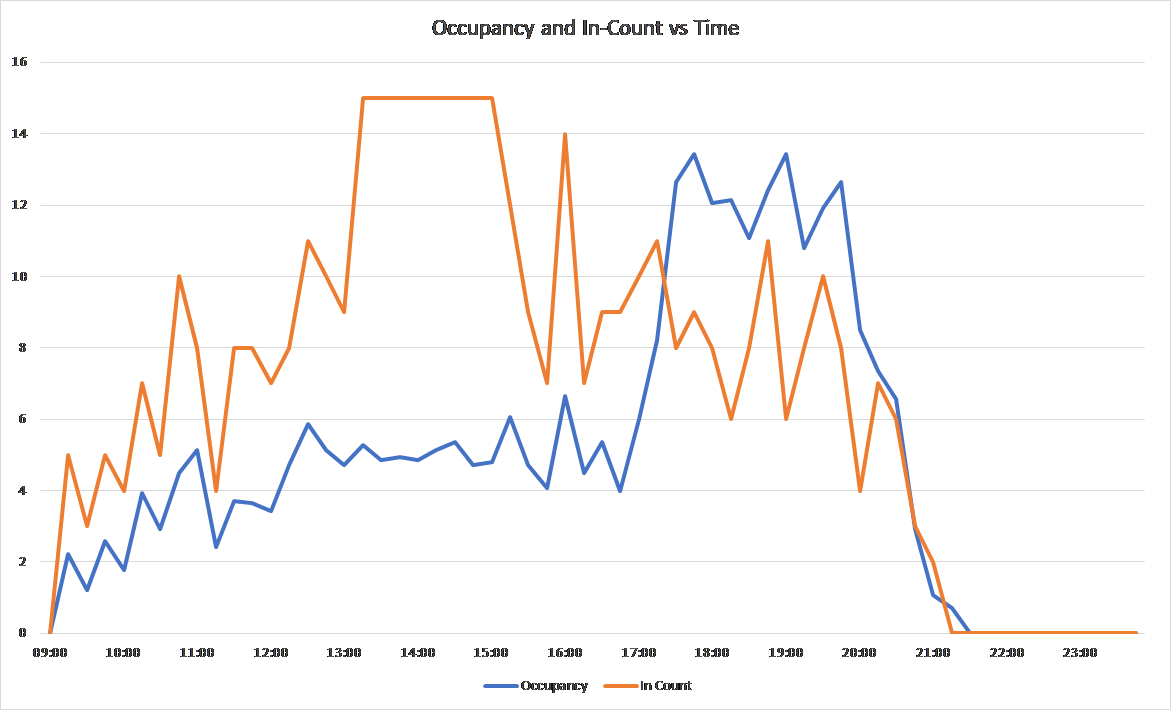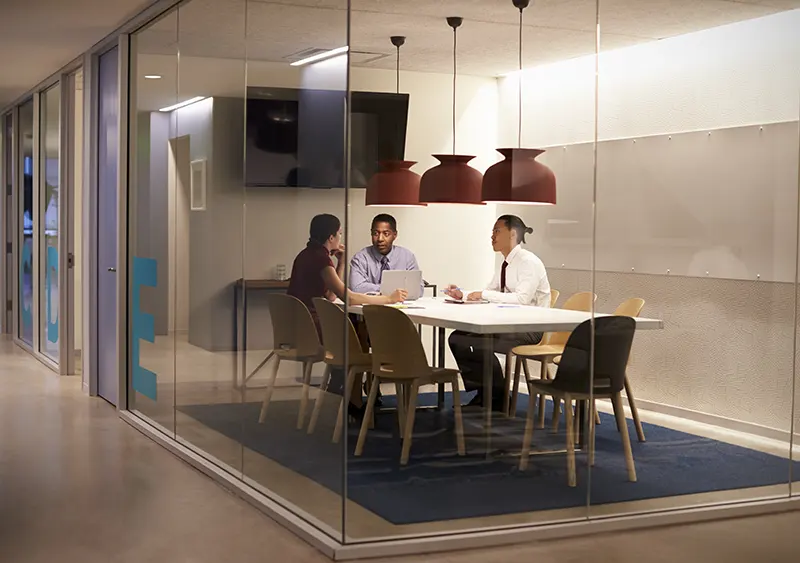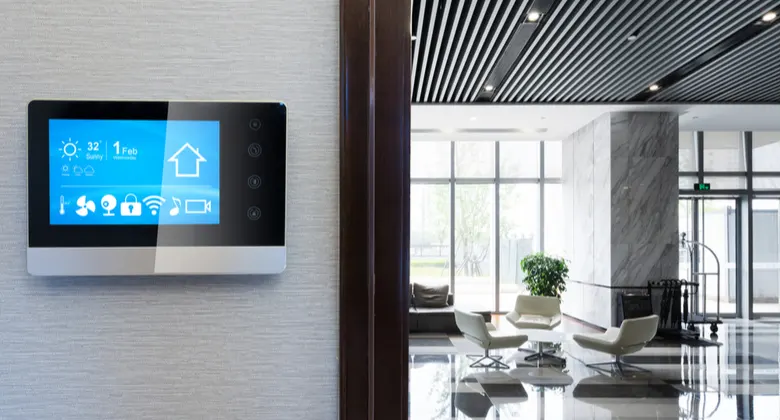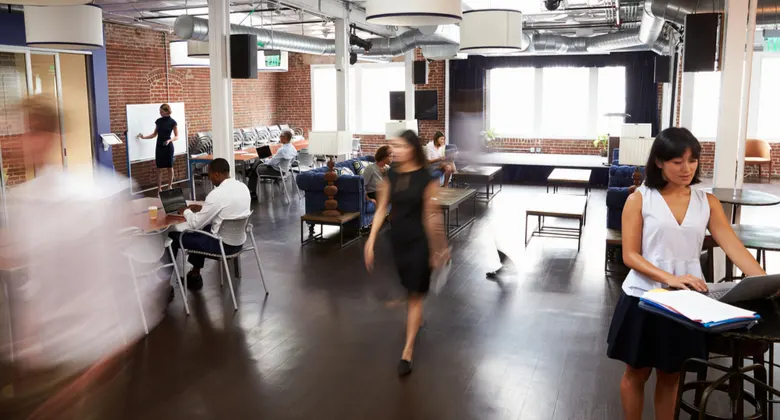Nearly two years ago, we published a blog about how occupancy data is the missing retail metric. We discussed how retailers were missing out on an opportunity to not only get a better understanding of how customers used their stores, but also how they could optimise staff scheduling to improve the customers experience and potentially reduce staffing costs.
In light of recent events and the current ongoing COVID-19 pandemic, we wanted to revisit this topic as accurate occupancy data is now more important than ever – not just for retail stores, but for offices and buildings everywhere.
Why accuracy is critical for occupancy data
Occupancy metrics rely on data from people counting sensors that measure the number of people entering and leaving a building. If the count of people going in or out is not accurate, then over time this can lead to a build-up or accumulation of errors. For example, if counting accuracy is only 95%, whilst this initially sounds good, it can rapidly build up such a big errors over time that the error range is greater than the actual occupancy, making the metric completely useless.
Data accuracy is critical when measuring occupancy as this minimises error build-up.
|
Accuracy level |
Number of count errors |
|
95% |
1 in 20 people not counted |
|
98% |
1 in 50 people not counted |
|
99% |
1 in 100 people not counted |
|
99.5% |
1 in 200 people not counted |
At 95% and 98% accuracy, the table above shows how large errors can rapidly accumulate as people are not detected entering or exiting the building.
In a high footfall location with 2500 daily visitors, even 99% accuracy is not good enough. As the day goes on, the live occupancy count could be out by as much as 25 people!
In a small building or store, the maximum occupancy under current government guidance and legislation could be less than 25 people. This means your live occupancy count could be preventing people from entering when it is safe to do so, affecting sales and revenue, OR, even worse, it could be allowing double the amount of people in to your building than is safe to do so.
When measuring occupancy for our SafeCount or True Occupancy solutions, we use our own highly accurate people counting device, Vector 4D. This sensor has a proven accuracy in excess of 99.5% meaning that the potential for error build-up is extremely low, even when dealing with large volumes of people.
Why measure occupancy?
In the short term …
If you watch the news or browse social media, you will undoubtedly come across the term “social distancing” as Governments around the world are implementing social distancing policies, closures of non-essential business and restrictions on gatherings to slow the spread of the coronavirus.
Wikipedia describes social distancing as maintaining a physical distance between people to reduce close contact and prevent the spread of a contagious disease.
This means that essential businesses and essential retailers, such as supermarkets, banks, pharmacies (etc) can stay open, but they need to actively manage and control the number of people that enter their buildings. To do this effectively and to comply with Government guidelines, knowing the real time occupancy of your building is critical.
In the long term …
Accurate occupancy data has immense value beyond its short term “social distancing” applications. In buildings and offices, occupancy data can power advanced occupancy analytics systems that make buildings smart, run more efficiently and enable significant cost savings.
In retail stores, as already discussed, occupancy data is a missed opportunity. It can help retailers understand their customers better and enable them to enhance the customer experience as well as optimising other aspects such as staff scheduling.
Many retailers already combine customer count data from people counting sensors with transaction records to measure their stores conversion rate, but this is only one measure of performance.
Occupancy of a store is driven not just by footfall in to the store, but also by the duration of each customers journey within the store (the customer dwell time).

In the example above, a store has a high footfall count at lunchtime but short customer dwell time (typical of lunchtime trade), however the store is clearly busiest (highest occupancy) between the hours of 5pm to 7:30pm when footfall traffic is lower but the average customer dwell time has increased.
Assuming that conversion rates are impacted by the staff to customer ratio (stores with a low ratio will perform worse than stores with a high ratio) then maintaining staffing levels during periods of high occupancy, but lower footfall, will enable retailers to maximise their average daily conversion rate.
Combine this with the reality that customers dwelling longer are likely to buy more leads to the conclusion that for optimum store performance and staffing levels, occupancy data is essential.
How to measure occupancy?
As mentioned earlier, occupancy is measured by counting the number of people that enter a building, counting the number of people that have left the building and then doing a calculation to work out the difference.
Whilst this sounds simple, accurately detecting people is not and there are many different methods and technologies that can be used. These range from low tech options such as manual counting at the door to high tech that require no manual input at all.
In the short term …
A quick and easy option to rapidly get started with occupancy data is with a SafeCount solution.
SafeCount is a real time occupancy counting and monitoring solution that delivers live occupancy data with visual warnings and alerts when limits are approached or exceeded. Designed to help businesses keep employees and customers safe during the current pandemic, SafeCount includes everything you need to start collecting live occupancy data and typically be installed in less than 30 minutes.
In the long term …
These simple solutions can be expanded and grown to capture more data, at a more granular level and provide deeper understanding and insights.
Our True Occupancy solution is one such example. It uses occupancy data to provide space utilisation and occupancy analytics for buildings of all shapes and sizes. This occupancy data goes beyond just counting at the entrance and can be broken down by floor, department and even individual rooms. This allows businesses, property teams and facility managers to really understand how their buildings are being utilised. These insights remove guesswork from critical business decisions and enables potentially huge savings through improved space utilisation, workplace optimisation and energy usage reduction.
Share this
You May Also Like
These Related Posts

Implementing Real-Time Analytics: A Q&A with Simon Carter

How can Offices Save Space, Energy and Money?

How True Occupancy Data can Turn Your Building Into a Smart Building
Connect with us
Need more information? Ready to get started? We're here to help, get in touch.


